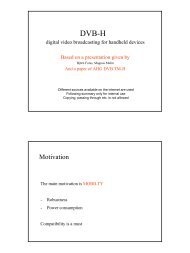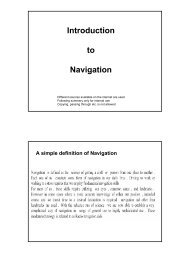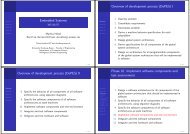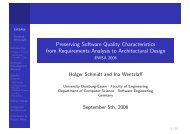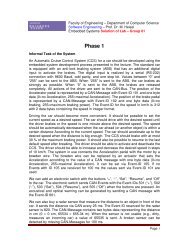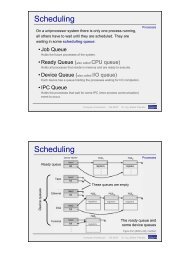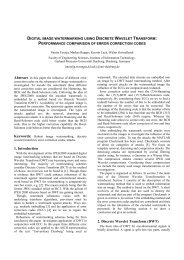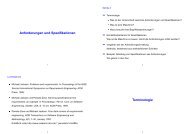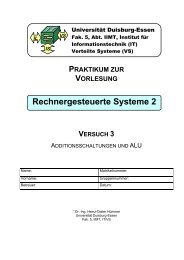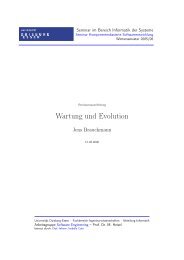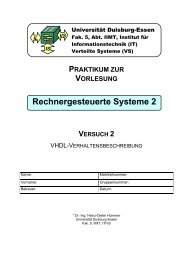Slides Part 2 (OOA, pages 1-128, pdf, 4 slides per page)
Slides Part 2 (OOA, pages 1-128, pdf, 4 slides per page)
Slides Part 2 (OOA, pages 1-128, pdf, 4 slides per page)
Create successful ePaper yourself
Turn your PDF publications into a flip-book with our unique Google optimized e-Paper software.
LIFE-CYCLE EXPRESSIONS<br />
The Life-Cycle model<br />
Expressions over the alphabet: 〈system o<strong>per</strong>ation〉, #〈output event〉<br />
113<br />
Each system o<strong>per</strong>ation and each expression of the form #〈output event〉 is a<br />
life-cycle expression.<br />
If x and y are life-cycle expressions then so are<br />
x;y x is followed by y<br />
x | y either x or y<br />
x∗ x is executed 0 or more times<br />
x + x is executed at least once<br />
[x] x is optional<br />
x || y x and y are executed concurrently<br />
O<strong>per</strong>ator precedences: [], ∗ , + , ;, |, ||<br />
115<br />
PURPOSE<br />
➠ describe the overall behavior of the whole system or describe the life-cycle<br />
of important objects<br />
➠ restrict the order in which the system o<strong>per</strong>ations may be invoked<br />
➠ Notation:<br />
• Fusion: life-cycle expressions<br />
• UML: state machine diagrams<br />
Definitions: name = life-cycle expression<br />
name can then be used in other life-cycle expressions (but recursion is not<br />
allowed!)<br />
114<br />
Rule:<br />
All system o<strong>per</strong>ations and all output events must occur in the life-cycle model!<br />
116



